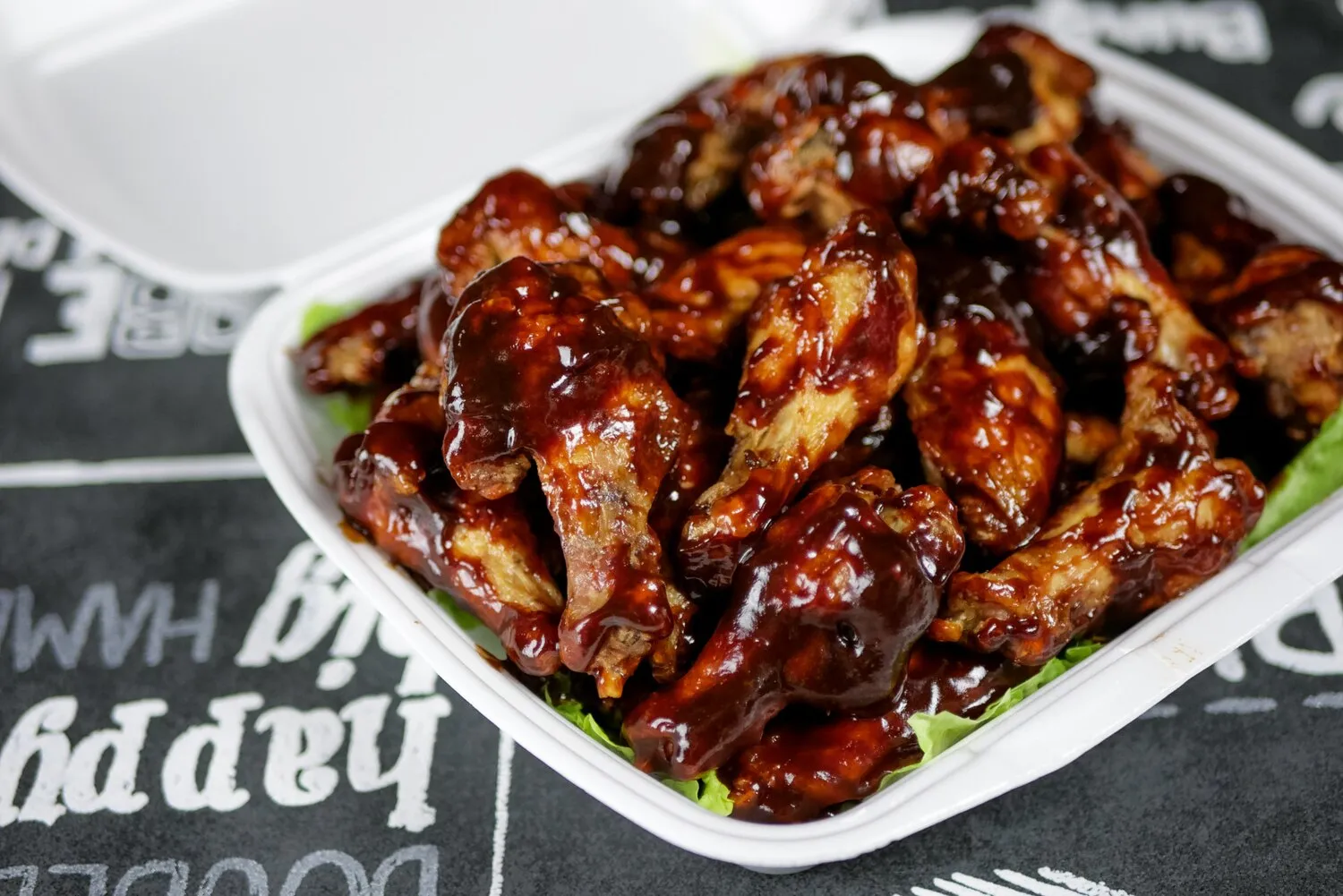
Dry Fried Wings
Chicken wings, dry-fried and served with a flavorful sauce. Often mentioned in reviews.
Nutrition Facts
* The % Daily Value (DV) tells you how much a nutrient in a serving of food contributes to a daily diet. 2,000 calories a day is used for general nutrition advice.
Good Good Culture Club
Dry frying techniques in Chinese cuisine have a long history, emphasizing the extraction of moisture and concentration of flavors. While the exact origins of dry-fried wings are difficult to pinpoint, the technique likely evolved from traditional methods of stir-frying and dry-braising meats to achieve a crispy exterior and intense savory taste. The popularity of chicken wings globally, particularly in the West, also influenced the variations found today.
Dry Fried Wings, while a relatively modern dish, reflect the Chinese culinary emphasis on texture and balanced flavors. They are often enjoyed as a shared appetizer or snack, especially in restaurants and increasingly at home.
Communal Eating
Like many Chinese dishes, Dry Fried Wings are often served as part of a larger meal and shared among diners, promoting a sense of community and togetherness.
Emphasis on Texture
The crispy skin and tender meat of Dry Fried Wings highlight the Chinese culinary focus on achieving a balance of textures in a single dish.
Regional Variations
Different regions of China, and Chinese communities globally, may have their own variations of Dry Fried Wings, incorporating local ingredients and flavor preferences.
Dry Fried Wings are characterized by a savory, slightly spicy, and umami-rich flavor profile, achieved through a combination of dry frying and a complex sauce.
The primary flavor components include: Savory (soy sauce, oyster sauce, Shaoxing wine), Spicy (dried chilies, Sichuan peppercorns, chili oil), Umami (fermented black beans, MSG, chicken powder), Aromatic (garlic, ginger, scallions), and a touch of sweetness (sugar or honey). The dry-frying process crisps the skin and intensifies the natural flavors of the chicken. The sauce, which is often added towards the end of cooking, coats the wings and provides a concentrated burst of flavor.
Dry the Wings Thoroughly
Pat the wings completely dry with paper towels before frying to ensure maximum crispness. Excess moisture will steam the wings instead of frying them.
Use Moderate Heat
Fry the wings at a moderate temperature (around 325-350°F or 160-175°C) to cook them through without burning the skin. Multiple rounds of frying may be necessary.
Don't overcrowd the pan
Fry the wings in batches to avoid lowering the oil temperature, which can result in soggy wings.
Adjust the Sauce to Taste
The sauce is the key to the flavor of Dry Fried Wings, so adjust the ingredients (soy sauce, chili, sugar, etc.) to your personal preferences.
Explore additional Chicken Wings dishes and restaurants
Explore Chicken WingsDiscover top dining spots and culinary experiences in San Francisco.
Explore San FranciscoLearn more about the food culture, restaurant scene, and culinary heritage of United States.
Explore United States